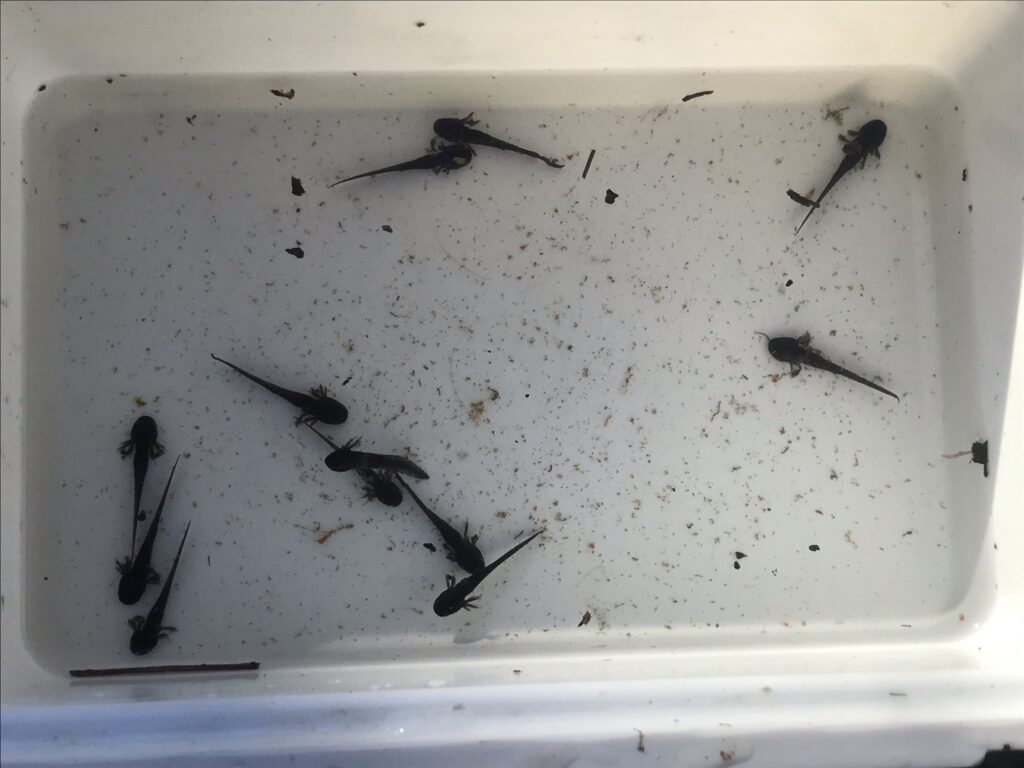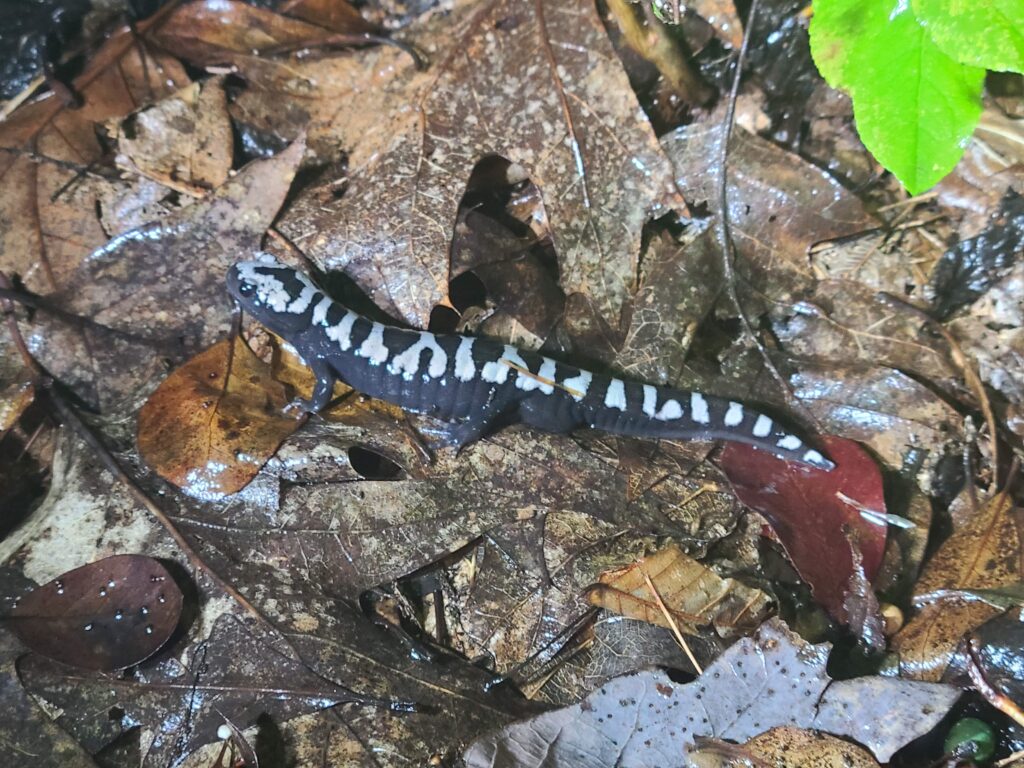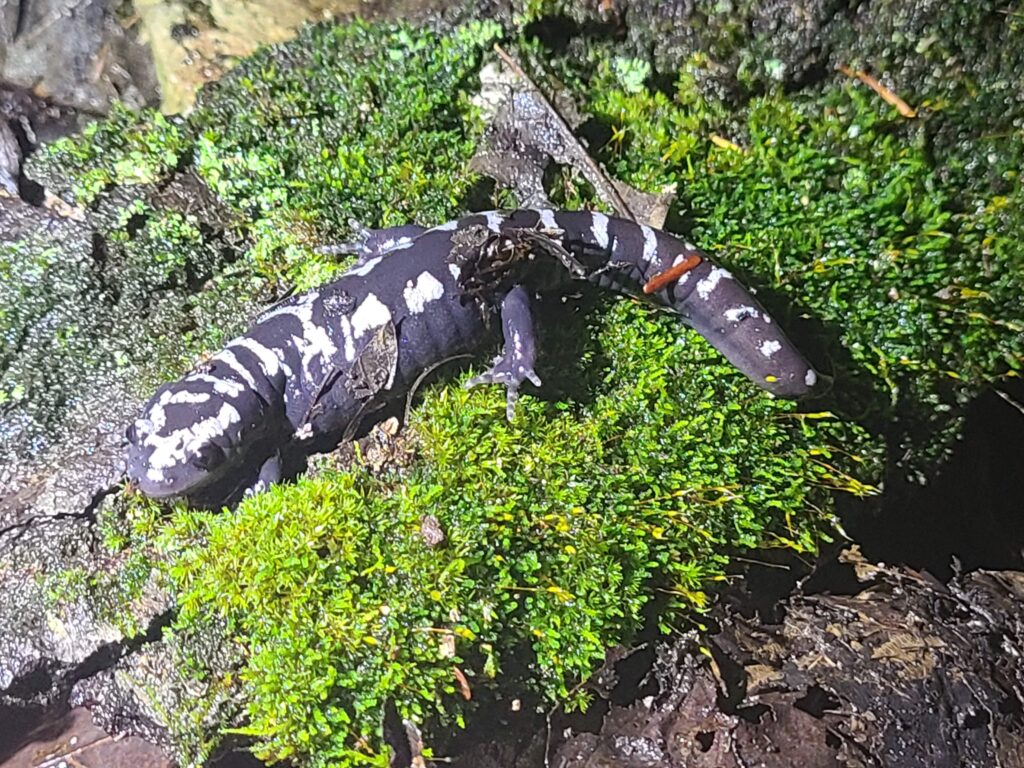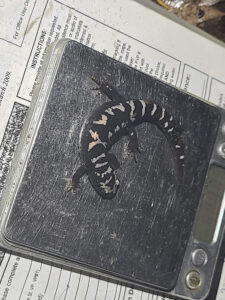Regular readers may recall the exciting news from this past spring: baby marbled salamanders were found for the first time at the Middlesex fells since 1932, a strong indication that Zoo New England’s reintroduction program was succeeding. Due to the secretive habits of adult marbled salamanders, though, we still had no idea how many breeding adults there currently were in the Fells population. Since 2016, we’ve released hundreds of young salamanders, but we knew many of them might not survive to adulthood. Are there 2? 20? 200? Even as we counted larvae, we had yet to ever see any of the salamanders we had originally released since they were let go.

What makes marbled salamanders so hard to find? The salamander genus they belong to (genus Ambystoma) are also known as “mole salamanders,” a name they earned because the adults are almost never seen in the light of day. Instead, they spend essentially their entire terrestrial lives under logs or in burrows, mostly those created by other animals. There, the salamanders feed on worms, slugs, and other small invertebrates that are attracted to the rich, moist environments they favor. Since marbled salamanders exist as aquatic larvae for only a few months before they become terrestrial adults and spend all their time hidden away, it’s understandably difficult to say how many adults are in any given population.
There is one time of year, though, when we can tilt the odds in our favor for surveying marbled salamander populations: fall. Rainy fall evenings before the temperature drops too far are the best time to find marbled salamanders near the vernal pools where they will lay their eggs. Unlike most salamanders, who breed and lay eggs in the spring, marbled salamanders lay in the fall and allow their cold-hardy larvae to grow all winter long in icy pools. When spring comes around, those larvae are larger and stronger than anything else in the pool, able to eat even the eggs and larvae of other salamander species. Less than two weeks ago, a team of ZNE staff and volunteers went to a pool at the Middlesex Fells to look for adult marbled salamanders on a rainy evening – and they found them!



We consider ourselves extremely fortunate to witness the return of a species that has been absent from the Middlesex Fells for almost a hundred years. Finding healthy adults – even a handful – makes us optimistic that the population will continue to reproduce in the coming years. These salamanders show every indication of establishing themselves successfully in their new home, and the future for them is looking bright. Our team also documented wood frogs, crayfish, and other forest pool denizens during their nighttime search for salamanders. Not a bad way to spend a rainy evening in September!
